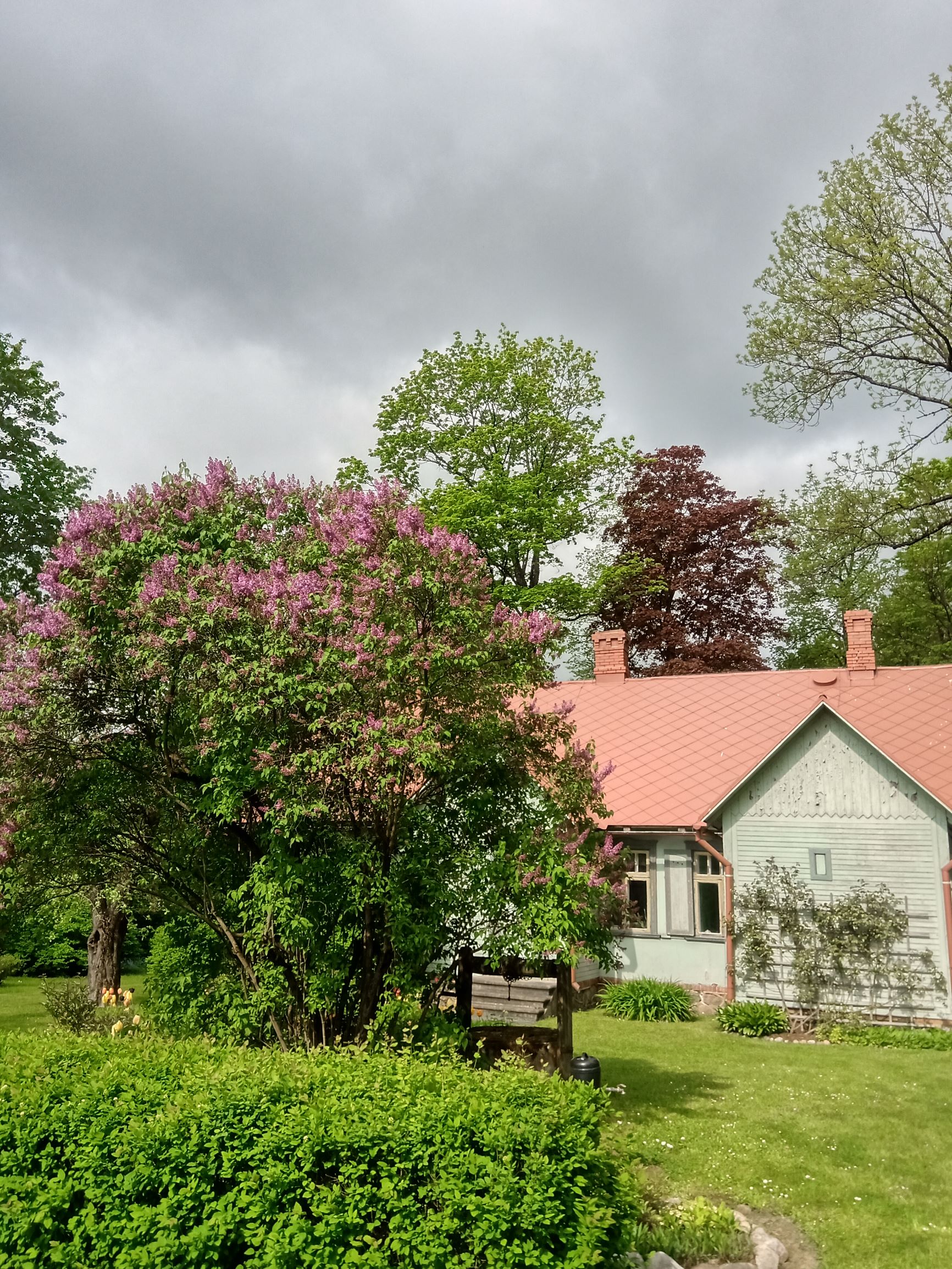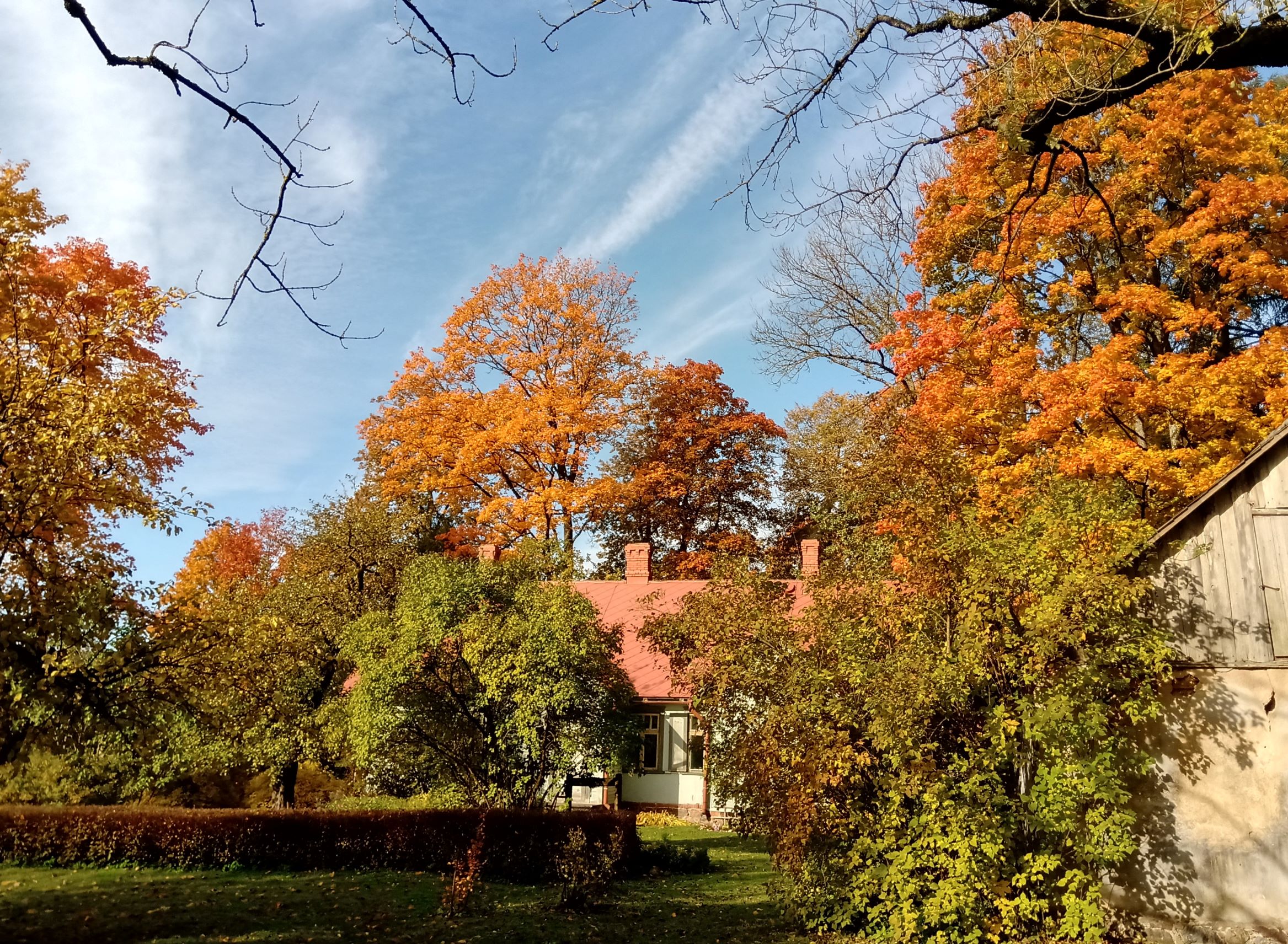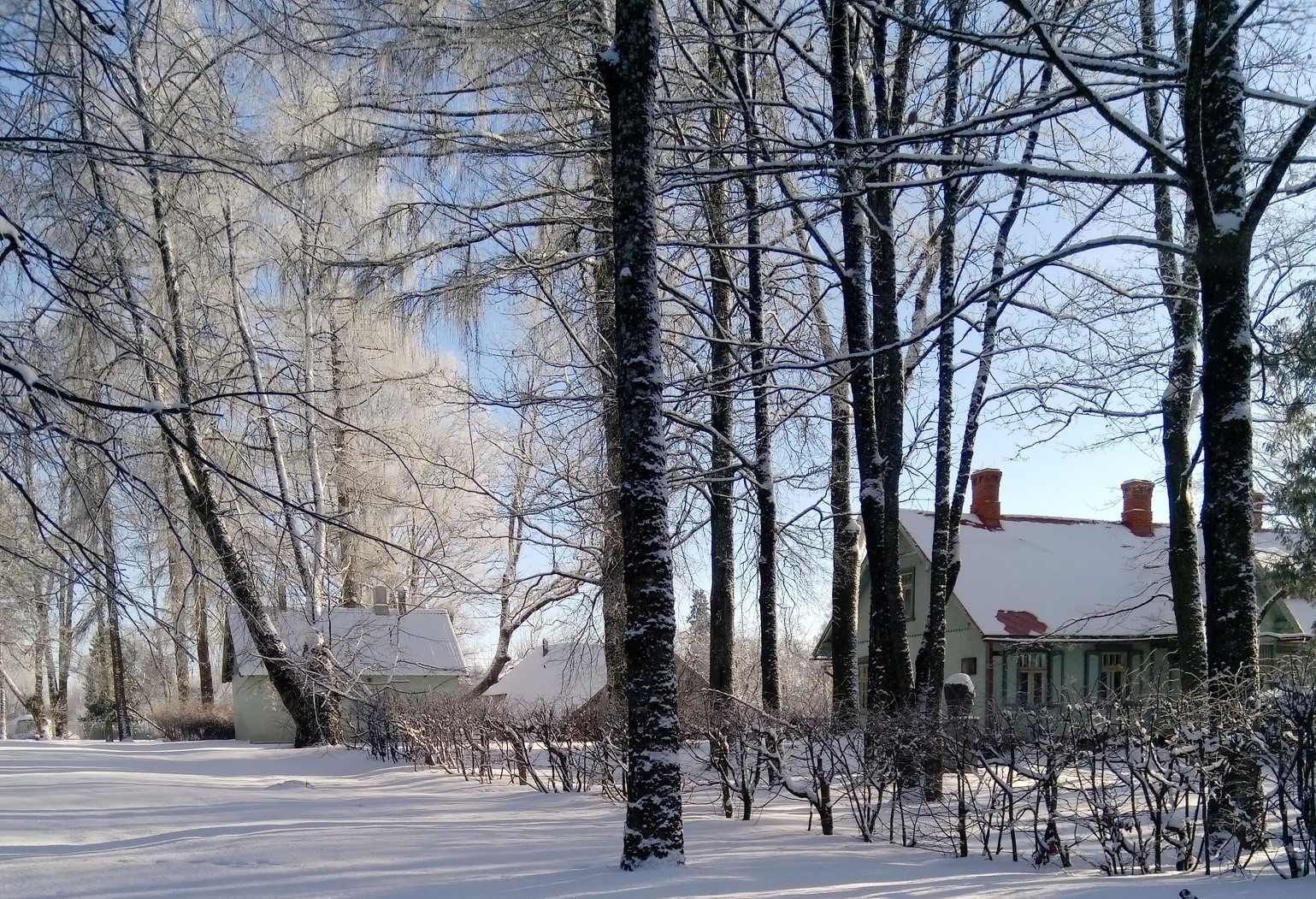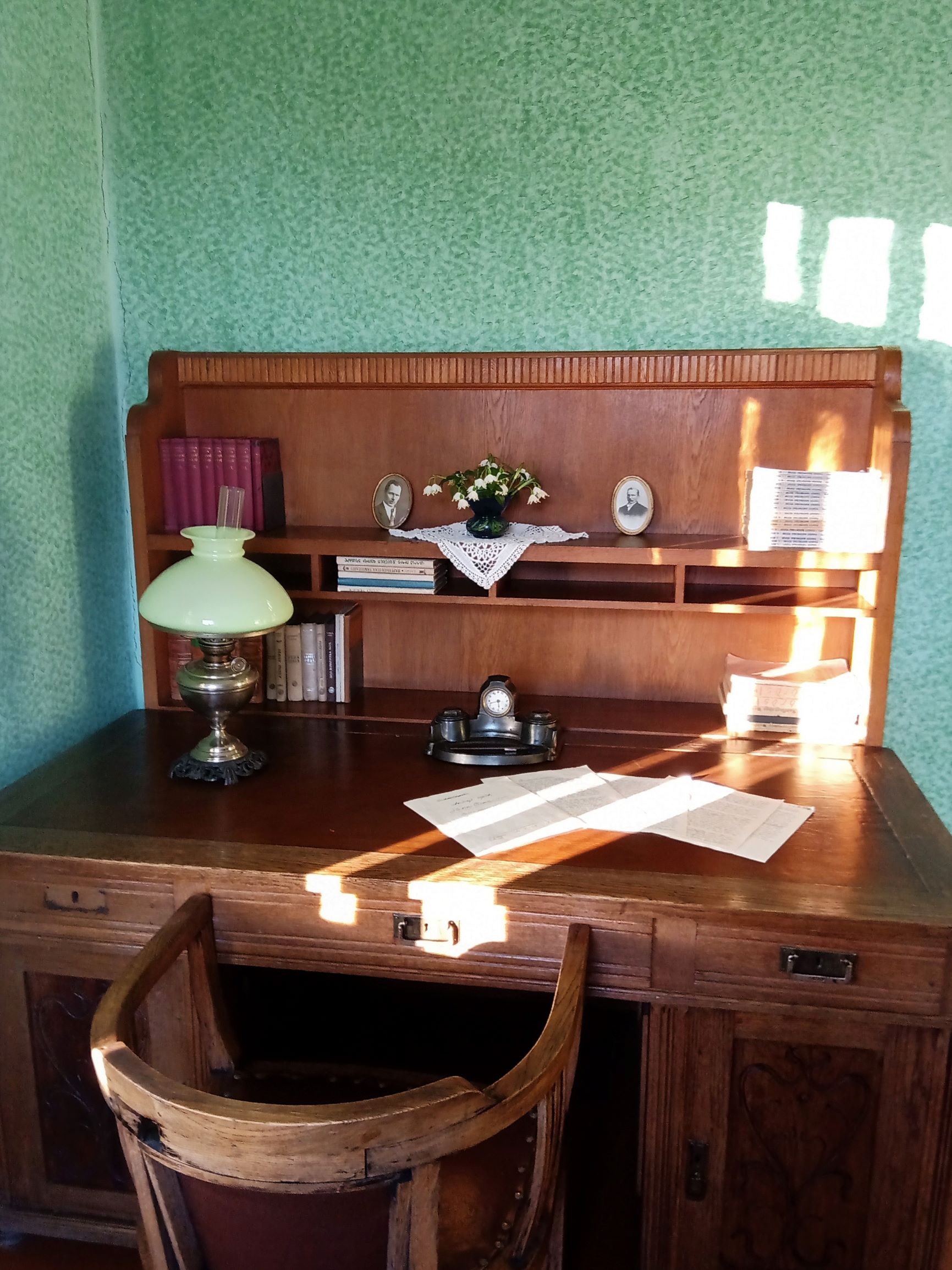The Andrejs Upīts Memorial House represents the fruits of the writer’s spiritual and physical work. Visit the museum that is surrounded by a garden which Upīts planted himself, and learn about him and the environment that inspired him to write his best-known books.
Upīts lived in the house, which was built in 1908, but sacked during World War I. In 1921, the family built a new house on the foundations of the former one. The writer himself sketched window shutters and the front door, and he also took part in building the house.
In 1952, Upīts donated the house to the state, and a museum was established. The exhibition covers the life and work of the writer in the early 20th century and during the 1920s and 1930s. It was precisely at Skrīveri that the author produced his most important work and translations up until World War II.
A particular treasure is the garden which the author planted, with many different kinds of trees and bushes that he found and brought home from many different places. Each tree has its own life history. The garden has not been forgotten. It is the site for concerts and discussions. Students are invited to learn about the garden during educational tours.
The museum at Skrīveri embodies the writer’s piety toward spiritual and physical work, depicting his growth from a simple tender of livestock as a child into a talented writer and intellectual.









